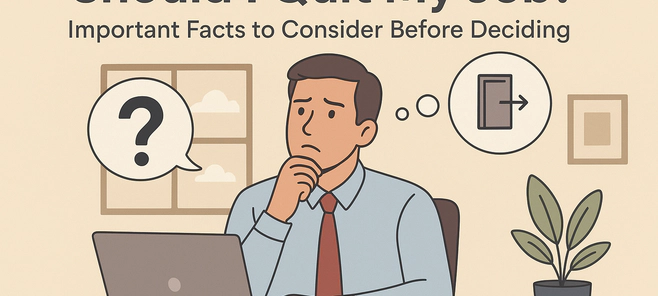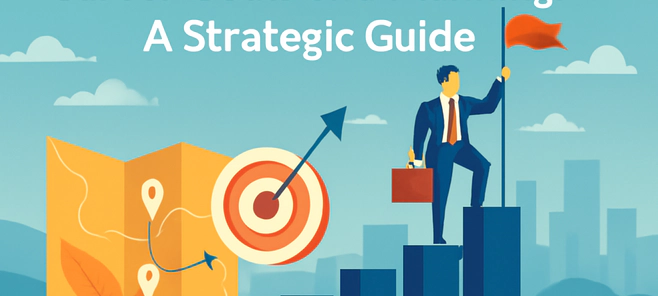A simple and complete guide to writing a resume that catches the recruiter’s eye and gets past ATS systems - ideal for both freshers and experienced job seekers.
What Should You Know About How to Write a Resume?
Want to get your dream job? First, learn how to write a resume. To write a resume, we need to understand the mechanism or philosophy behind it. Keep in mind, it is the most important component in getting a job. You may have a lot of knowledge, education, and experience, but if your first impression - your resume - is not perfect, you may not get the job you expect.
Philosophy Behind the Resume
A well-written resume is the key to entering your dream office or the recruiter’s room. So you already understand how important it is. If recruiters or HR aren’t impressed by your resume, you’ll be out of consideration before even getting in the room. You need to capture the recruiter’s attention - or the Applicant Tracking System (ATS) - with a strong resume.
Think Like a Recruiter
Look, don’t just jump into writing your resume right away. You need to get what this whole thing is actually about first. When you’re going after that job you really want, put yourself in the recruiter’s shoes for a second. What are they actually looking for when they’re going through a stack of resumes?
Here’s the catch, though - your resume probably won’t even reach human eyes at first. Around 90% of larger companies use something called an ATS - essentially, software that scans resumes for keywords before anyone reviews them. So you’re basically dealing with two different readers here - first, there’s the software that’s hunting for keywords, then there’s the actual person who might get to see your resume if you’re lucky. Think about it - if you were the one going through a pile of resumes that somehow survived the computer filter, what would grab your attention? You’d probably want to see stuff that actually relates to the job you’re trying to fill. Something you can quickly look at and think ‘okay, this person gets it’ instead of having to decode what they’re trying to tell you. And what would make you roll your eyes? Probably a mess of random information that has nothing to do with what you’re hiring for.
It’s really that straightforward - there’s both technology and a real person on the other end trying to find the right fit.
Additionally, up to 90% of employers, including most top companies, utilize systems called Applicant Tracking Systems (ATS) to sort and manage job applications. These systems operate based on specific commands or keywords. To create a great resume, you should align it with both the recruiter’s expectations and ATS technology.
Choose an Appropriate Template
A properly structured resume can make a strong impression. It helps spark the interest of HR or recruiters. First, you need to understand the industry and the position for which you’re applying. Then, you can choose or design a template using tools like Canva or other apps. Spend time selecting the right layout. You can explore thousands of samples online. Remember: the template should be clean, uncluttered, and easy to read.
Process of Building a Resume
A recruiter wants to know whether you’re suitable for the position. They focus only on specific information. Less than 3% of resumes result in a job interview, so every section must be well-written. The core sections are: Resume Objective, Professional Experience, Skills, Education, Contact Information, and Training. Optional sections include extracurricular activities, awards, volunteer work, publications, and references. Let’s go through each section.
Objective / Summary
Hiring managers spend an average of just 7 seconds reviewing a resume because they receive so many applications. The same applies to ATS filters. Your objective should clearly state your relevant experience, skills, and how you align with the job requirements. Many people use the same sentences for all jobs, but each position requires tailored wording. ATS software is built to detect specific keywords. Before writing, review the job posting, identify key terms, and incorporate them into your objective. Keep it concise - 2 to 3 lines are sufficient.
Professional / Work Experience
This is one of the most important sections. It directly matches the job description and responsibilities. It helps recruiters evaluate whether you’re a fit for the role.
Use reverse-chronological order: list your most recent job first. Include the duration of your experience - this helps with ATS parsing. Don’t just mention job titles or company names - describe your core responsibilities and achievements. Use action verbs and include results whenever possible. Recruiters want to see your outcomes, not just your tasks.
Educational Experience
Most formal jobs require specific educational qualifications. List your academic background in reverse-chronological order, just like your work history. Start with your most recent degree. Include the degree title, field of study, institution name, and result. Keep in mind that grading systems vary by country - include explanations if needed (e.g., GPA scale or honors) to help recruiters interpret your achievements.
Skills
Highlight your core skills in a dedicated section. Focus on the most relevant ones for the job. Many job seekers now use rating-based visuals (e.g. bars or stars), which can help recruiters assess your level.
Also, skill names often serve as keywords for ATS, so be precise and use terms from the job posting.
Contact Information
This section is essential; it’s usually the first thing recruiters check. Include your contact details, a professional email address, and your phone number. Avoid informal emails (e.g. funnick123@gmail.com). You can also add a link to your online portfolio or LinkedIn profile.
Training
Different industries require different types of training. These can include both technical and soft skills. Some jobs even require specific certifications. If you’ve completed relevant training, it can give you an advantage.
List what type of training you completed and the skills you gained. Many job seekers think only technical training matters, but nowadays, soft skills are just as important. Leadership, communication, public speaking, problem solving, and emotional intelligence are highly valued. Completing online courses in these areas is also worth mentioning.
Professional Certificates
Don’t miss the opportunity to showcase your professional certifications. Even if you have only a few, include them. These small additions can make your resume stronger and help you get closer to your dream job.
Extracurricular or Volunteer Activities
Freshers are often discouraged because they lack work experience. This section is a great way to stand out.
If you’re good at singing, dancing, debating, or sports, mention it. It shows you’re active and communicative. If you’ve volunteered or organized any events - even informally - describe what you did. It can show leadership and initiative.
Many students were active in clubs; list your position and the duration of your involvement. Additionally, if you’ve won any awards or honors, please include them here. These points help strengthen your resume, especially if you’re just beginning your career.
References (Optional)
References are no longer mandatory unless specifically requested. You can include a short note like:
“References available upon request.”
Picture
There’s an ongoing debate about whether to include a photo. It depends on the country.
In Asia and some parts of Europe, it’s common to include photos. But in many countries, including the US, it’s discouraged due to concerns about bias or discrimination. Always research your target market’s standards.
If you do include a photo, make sure it’s professional. No selfies or casual shots. Use a clear, formal, or semi-formal image with a plain background. Maintain standard photo dimensions.
Language
Many companies operate internationally or hire for multilingual roles. If you speak multiple languages, highlight them.
English is preferred in most countries, but knowledge of languages like Chinese, Japanese, or Spanish can be a game-changer. If you’re not fluent, simply list the one language you’re most comfortable with.
Do’s and Don’ts
Here are some basic reminders: small mistakes can cost you your dream job.
Do:
- Use a suitable template
- Keep your resume short and presentable
- Focus on action verbs
- Include measurable results and stats
- Align your resume with the job description
- Make sure formatting is clean (font, spacing, alignment)
- Double-check for any incorrect or outdated information
Don’t:
- Add unnecessary or unrelated details
- Lie or exaggerate
- Submit a long, cluttered document
- Copy and paste from other resumes or job descriptions
- Use an unprofessional email address
Final Words
We all want our dream job, but we don’t always put in the effort to get it. Sometimes we blame luck or fate. But in reality, we can shape our own future by crafting a strong, focused resume.
Let’s get started!





